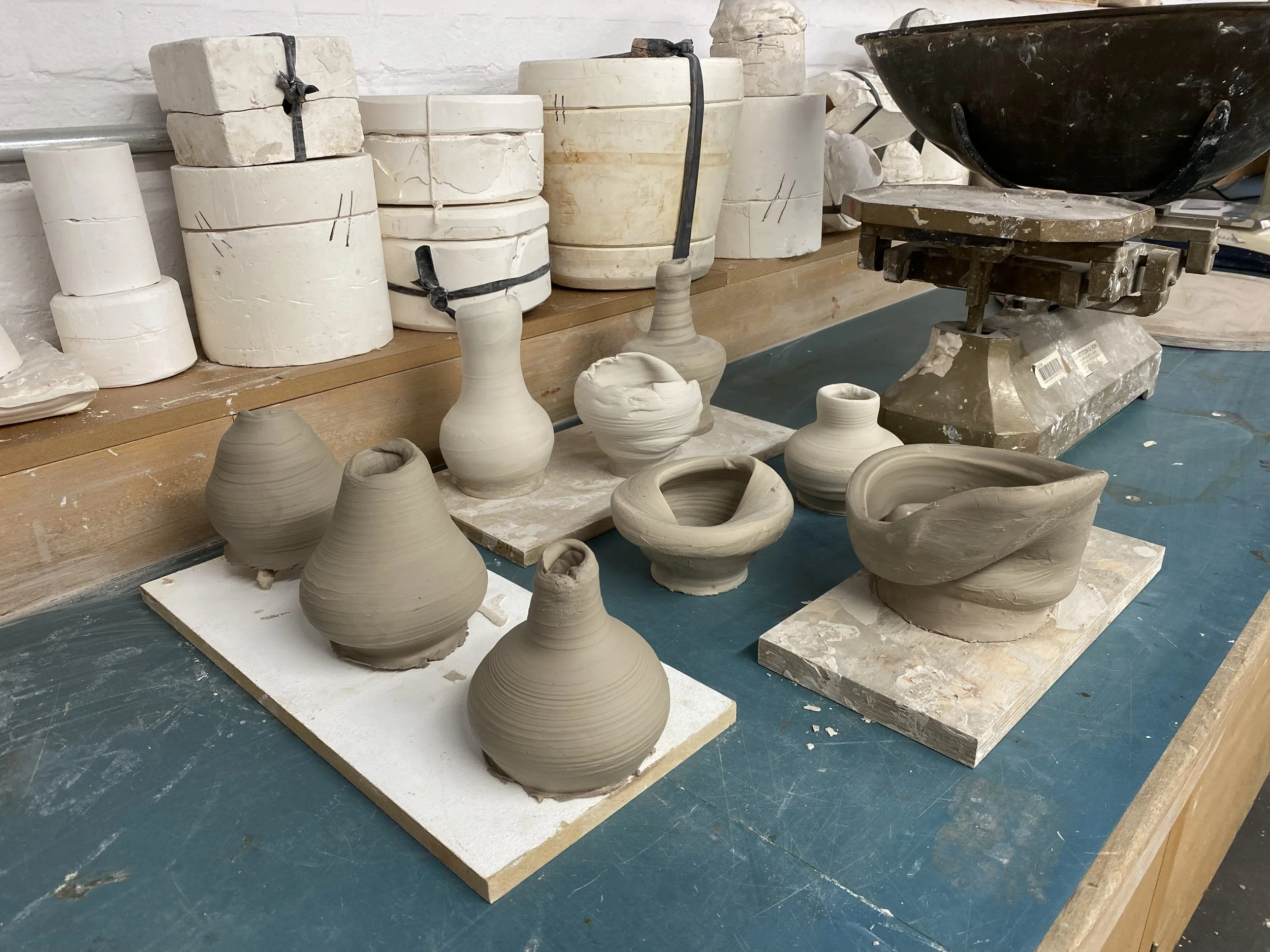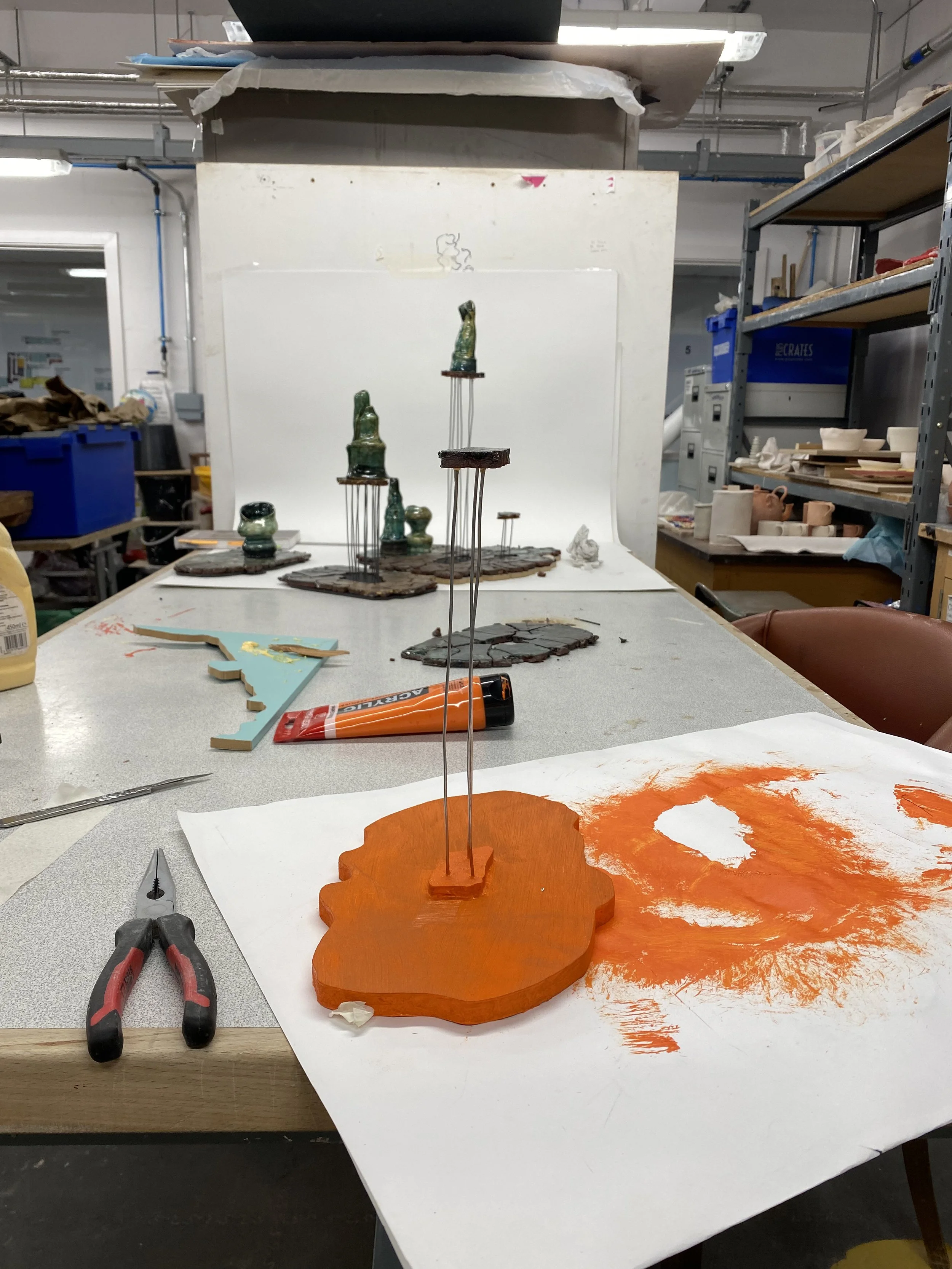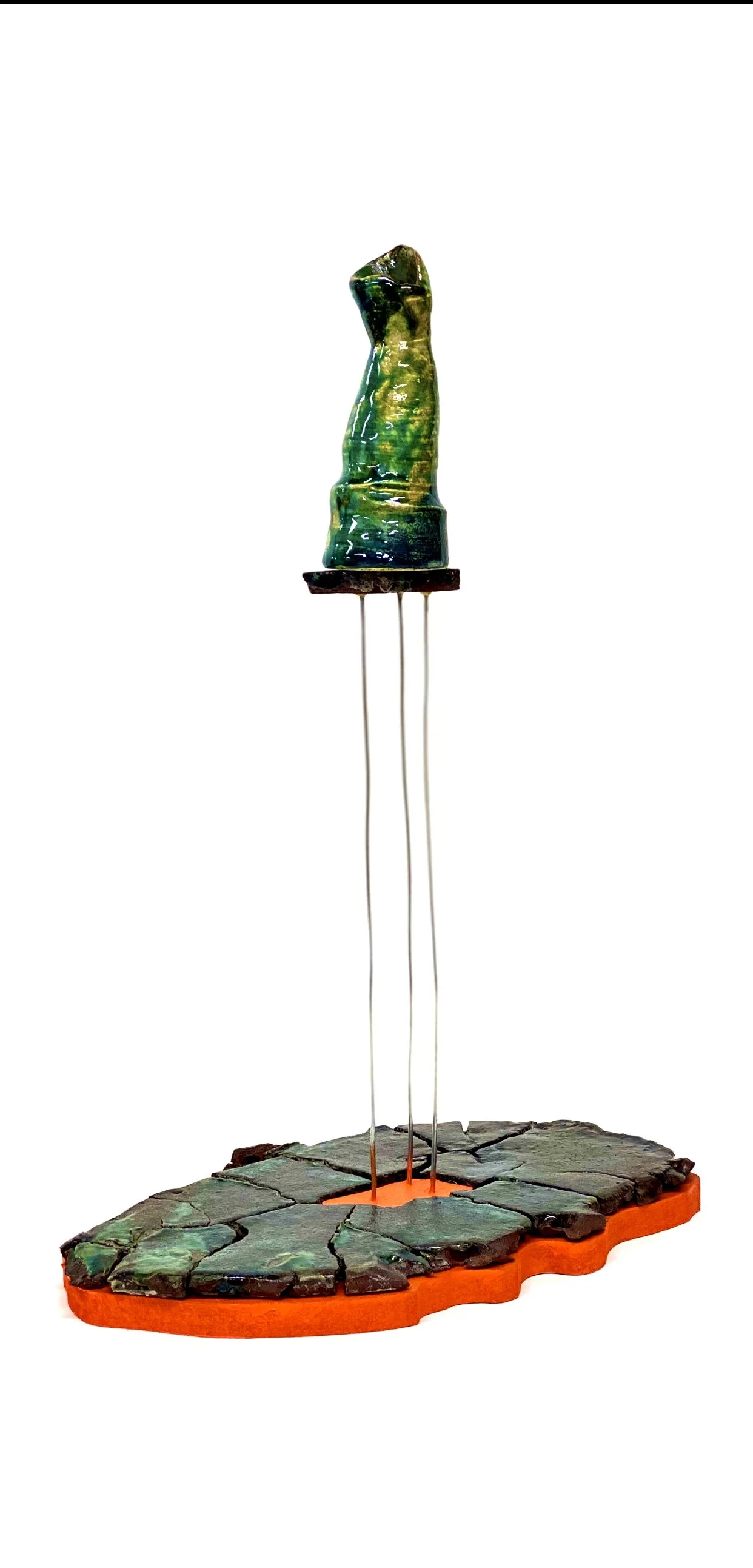Volatile landscapes.
Stuart Lee, Accidental Properties: Continuous series 2020 – 2022
I feel I am struggling to meet these works on the terms that present themselves. I have spent the last six months trying to develop a coherent body of work that challenges how we come into contact with art. I started this series of works by stating that they are non-functional pottery. This intrinsic grasping of these works as ceramics holds fast in the indistinguishable features that present themselves in the forms, shapes and textures. A text that I have been reading lately describes well what I believe is happening as I work towards the end this degree. In the book Beyond Critique: Contemporary Art in Theory, Practice and Instruction, edited by Pamela Fraser and Roger Rothman, there is an essay titled Post-Critical Painting by Andreas Fischer. Fischer makes a compelling argument as to what limits are identified in contemporary critique. Two proponents Fischer compares are Hal Foster, a favorite author of mine and Jacques Rancière. Foster, an advocate of the “didactic validity” of critique as a device, whereas for Rancière, the didactic nature only serves to establish a “position of mastery.” What Fischer is setting up is a post-critique landscape where the power structures that sustain critique can be superseded by artwork looking to transcend mastery in name alone. Especially - and this is where Fischer makes comparison to work being made today in contrast to historical critical positions - “if what lives on today does not seem interested in any real function outside of market complicity.” If I were to draw a comparison as to how Fischer views Rancière’s position of “art as fundamentally intertwined in social operations and, as such, not capable of the ‘critical distance’ necessary for a critical device,” and how such same devices are key to the success of the above body of ceramic structures “building awareness of the mechanisms of domination.” Domination comes to us in many forms. Market forces create the structures that bring us into contact with commodification. The potential for market objectives to produce further negative impacts, remains high as long as fragile territories and delicate landscapes remain occupied through mastery and market complicity. Further reading of Fischer’s essay explores the illusory nature of materiality which can go on to produce less than integral representations of the real. It is at this juncture that I feel my work steps into its own as a process to taking the object apart. This dismantling, Fischer posits, was alway the true intent of critique. If the illusion obfuscates the real, and the real has a dishonest or less than ethical implications, then it remains imperative that we question and counter the illusion. Therefore - and here we exchange Fischer’s use of the word painting for artwork - the “artwork is no longer the presentation of an illusionistic thing, but an action toward that thing.” This reversal of purpose serves to act as a way of bringing about discussion of what is behind illusion.
In my first example that embodies this framework, I propose that the illusion is in the fabrication of the object itself, via the intent of making a work of art. See fig. 1
Fig. 1. Objects of illusion. A selection of my “Non-functional Potteries.”
On their own, any one of these works take on shape via forces and manipulation. So, on what grounds do we come into contact with the same forces that are a result of institutional pressures? and how do these same forces show themselves? More importantly, on which territories? My work stands on two fronts that come into contact with these questions. The first being work as an inquiry. The second as an aesthetic embodiment of of such investigations into what it is to be. This work, by embracing its non-functionality, encounters the epistemology of knowledge that informs its being. Every crevice and crack is representative of the gaps that develop in our everyday existence. Whether socially, financially or culturally, what divides us takes on forms. these forms whether real or spectral show in ways that go beyond literal definition. Therefore, my work takes on a way of being. Here, that stands as non-functionality. It is at this juncture we can gain a critical distance from the practice of ceramics and move into a new modality of thought. The work ask that we engage it in a way that after aesthetic consideration we take an investigation into meaning. I am looking into what it is to explore gaps. Gaps appear between things. Things in pairs are a relationship. The gap is that which gives context to the correlational exchange. These pots act as a way trying to develop a new way of embodying the meaning of being.
Fig. 2. Stuart Lee: Accidental Properties: Continuous Series (2021) Works looking for context.
The idea in fig. 2 is to explore states of being across horizontal registers. Once here, we can exert a pressure to test these terrains, ontologically. On these surfaces we can extract elements of hierarchy and place objects higher as a way of further exemplifying taxonomies of state. What this does is directly politicise the work. Something I as an artist am reticent to do, yet intuitively feel this is how the work registers. Placing something over and above something else ,causes the work ‘to do’ something. What that ‘doing’ is is what I am trying to answer in my practice. And that brings the critical element into my considerations of making. Another register, is weight. these works don’t need to specifically have size to convey weight. How the raised terrain is supported, invokes the idea of support. These are all properties that are fundamentally encompass what my practice deals with as results of my making process. Terrains are alway precarious. This precarity can be explored using colour. (see fig. 3 and 4)
Please click on the images and then hover the cursor over the image for further evaluation and commentary.




